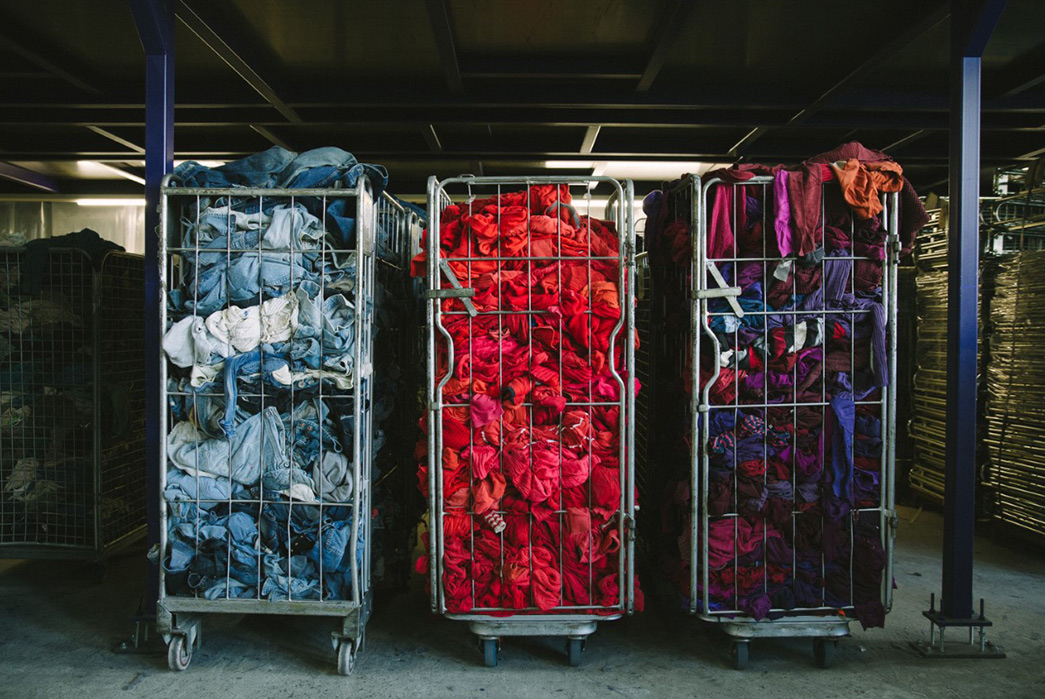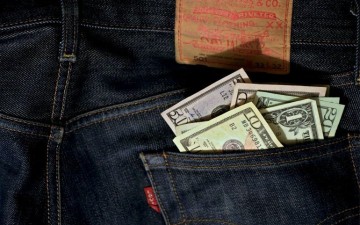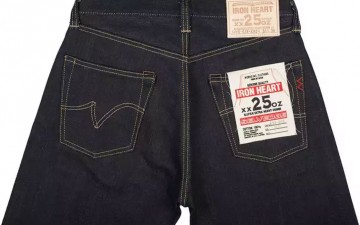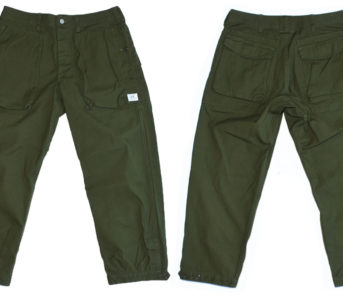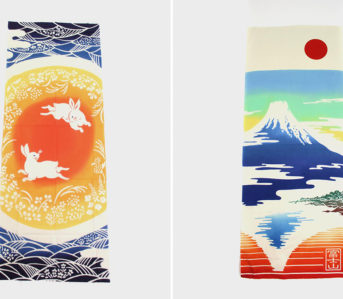Imagine this: in 10 years’ time, you’ll invest in raw denim jeans that are woven from organic cotton grown and spun in the same country as the garment is made. Not only that, but the natural indigo used to dye the denim is cultivated just a few miles away from the cotton field. Once you’ve enjoyed them and achieved sick fades status, it’ll be time to send your jeans off to a consignment company that resells them to buyers who prefer their denim to look distressed from the day it arrives.
Since you’ve washed them less and cared for them well, the jeans will last another few years in someone else’s wardrobe. When that time is up, they’ll be donated to a local facility that deconstructs clothing, sending metal rivets, buttons, and zips to be cleaned up and reused in another garment.
The cotton, meanwhile, is recycled to become new fibers that are spun into another fabric. Anything else, like the threads used to sew seams, will either be recycled or disposed of in a way that minimizes impact on the environment.
This is just a small example of what a circular clothing system could look like. Sure, it might seem a little long-winded, but when you consider the fact that, every second, the equivalent of one dump truck worth of textiles is incinerated or landfilled, it’s understandable why many in the industry are crying out for real change.
What is Circular Fashion?
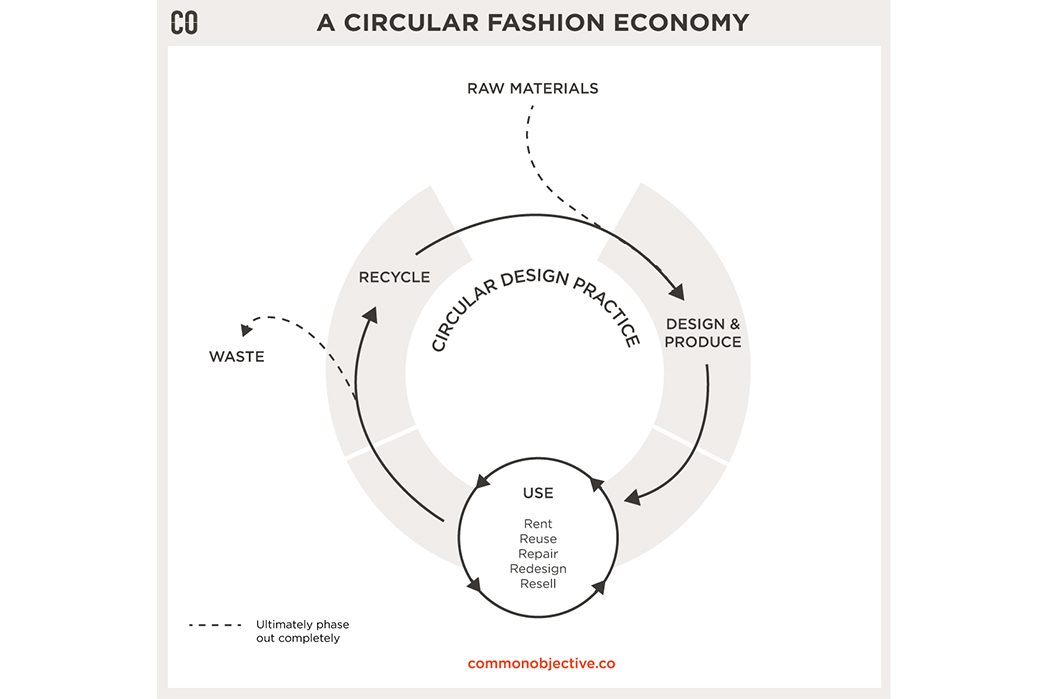
Image via Common Objective
It’s difficult to explain what circular fashion means in a single sentence because there are so many elements to it, but, in short, it’s the notion that materials and products are kept in circulation for as long as possible, and that waste and polluting products are designed out of the system.
Think of it as the opposite to the common ‘take, make, dispose’ model—a linear idea whereby items are made from virgin materials, used and then discarded without thought. It goes much deeper than that, and consultancy firm Green Strategy has identified 16 principles that are vital if a circular fashion industry is to thrive.
They include everything from designing for longevity and biodegradability to sourcing and producing without toxicity and, lastly, buying quality instead of quantity—we’re well-versed in that one here at Heddels.
Another aspect of this model is that the natural resources we’ve been using up so hungrily will have time to regenerate. This is, of course, just a drop in the ocean—an improved system could positively impact everything from the wellbeing of farmers and factory workers to freshwater access for many currently struggling across the world.
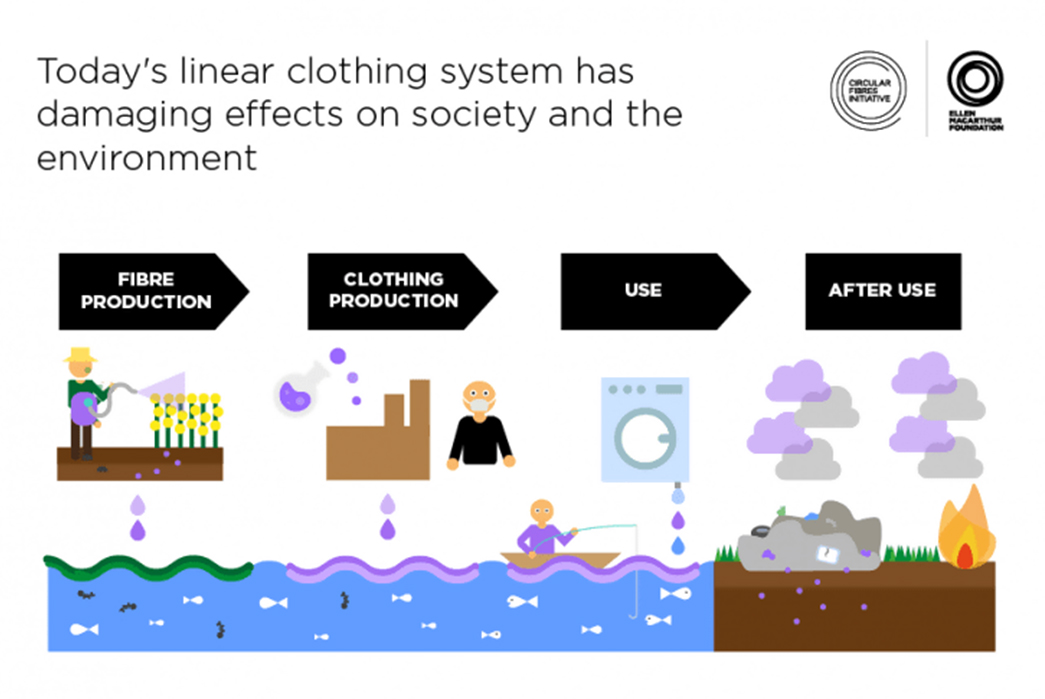
Image via Ellen MacArthur Foundation
The great thing about this model is that, in the long run, it’ll reduce humanity’s dependence on natural materials and the fashion industry’s impact on the environment. At the moment, that impact stands at 10% of all global carbon dioxide emissions every year and an estimated 1.5 trillion liters of water used annually.
A circular fashion system won’t come cheap. It requires huge investments in renewable energy, state-of-the-art machinery for fabric mills and recycling plants, as well as pouring money into businesses and farms so they’re able to reinstate and scale-up local production that may have been offshored for decades prior.
Fresh design practices will be implemented, so brands might have to fund the education of their staff to ensure everyone is on the same page. As you might imagine, this innovation and the revival of localized production are ripe for employment and job creation, and a 2017 report by The Ellen MacArthur Foundation found that a circular textile model could be worth around $500 billion to the fashion industry.
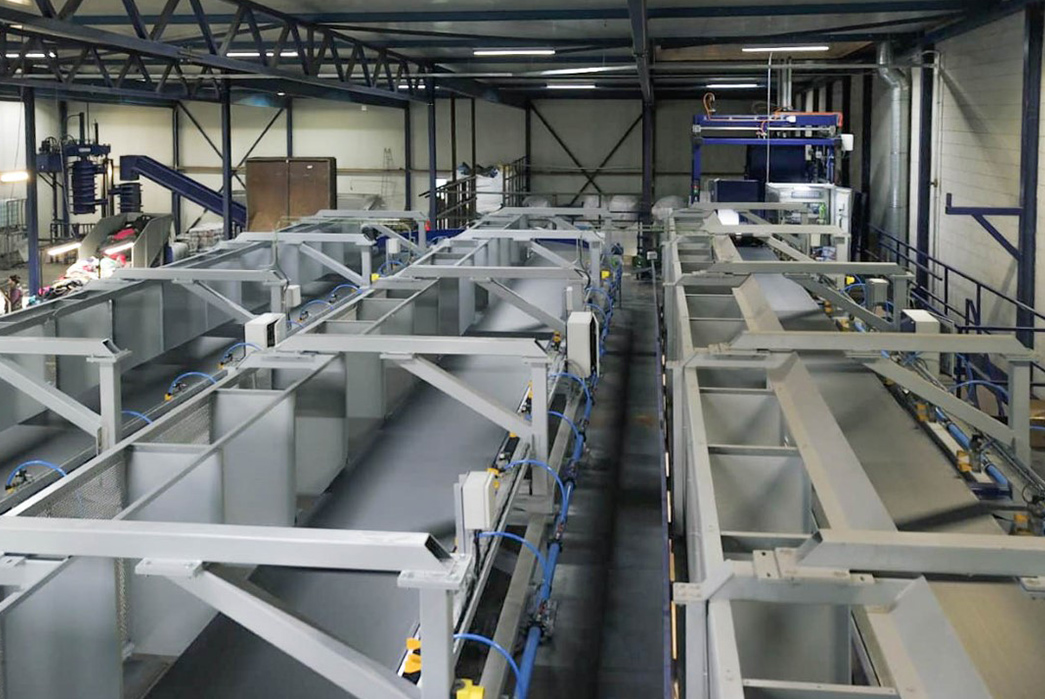
Fibersort, an innovative textile sorting machine capable of processing 900kgs of post-consumer textiles per hour, ready for recycling. Image via Wieland Textiles
The key to circular fashion is collaboration at every step of textile and clothing production, as well as cooperation from consumers. If a cotton grower supplies its yield to an ethical designer but uses toxic pesticides on the farm, then the loop breaks because those harmful chemicals will continue to permeate the chain long after that first length of denim has been woven.
If a denimhead buys an ethically and sustainably made pair of jeans but washes them four times a week, then the carbon footprint of the garment will inevitably increase.
As buyers, this means that in the future we can expect our clothes to be made predominantly from recycled materials or fibres that come from renewable sources. We can also anticipate an increase in the value of second-hand retail, as shoppers become hyper-aware of how their buying habits affect the planet.
Becoming more proactive in disposing of our clothing correctly is another thing we’ll need to be clued-up on, as is caring for the items in our existing wardrobes—you can get a head start on this one because we have plenty of guides for DIY mending.
Who is embracing circularity right now?
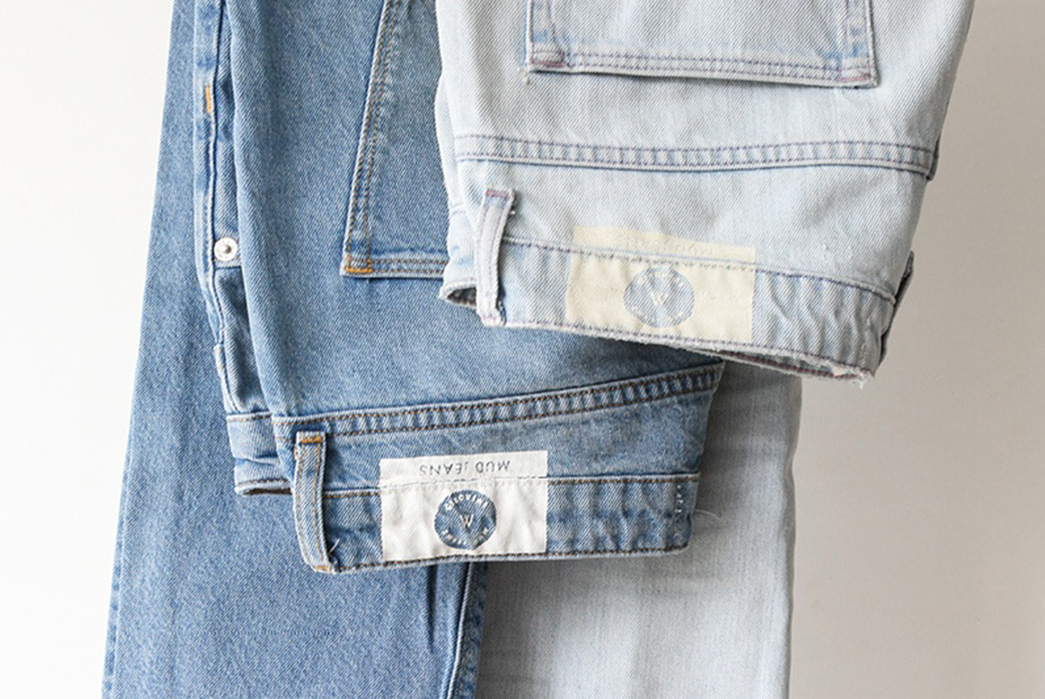
Image via MUD Jeans
Born in 2013, MUD jeans was founded to revolutionize the denim world. After decades of witnessing harmful practices throughout the supply chain, Bert Van Son sought to produce jeans that are ethical from every angle.
His workers are all paid above the minimum wage to sew every pair, while the factory reuses around 95% of its water through reverse osmosis, and much of the denim is recycled from post-consumer waste. It doesn’t stop there, either. MUD offers a take-back plan, a repair service, and an innovative leasing scheme in which shoppers pay a small monthly fee to rent up to three pairs of jeans for 12 months.
After that, they can switch for new ones with the same plan, and the brand will either sell the old style as vintage or recycle the materials. “An increasing group of people is seeking to move away from permanent ownership of clothing. Our leasers enjoy the feeling of owning less. Also, leasing generates more flexibility,” the Dutch label explains.
Outerknown is another label that’s championing circularity—the American brand, which is cofounded by surfer Kelly Slater, has pledged to fully embrace the model by 2030 through constantly evolving its production and slowly transitioning different categories to the system over the coming decade. Meanwhile, The North Face has partnered with The Renewal Workshop to train groups of its designers in working with circularity in mind.
Other major retailers like Inditex (Zara, Massimo Dutti, Stradivarius, Pull and Bear) and Adidas have signaled their intentions to work towards some aspects of circularity, but, particularly in the former’s case, it could be argued that the fast fashion model will never truly lend itself to a closed-loop system.
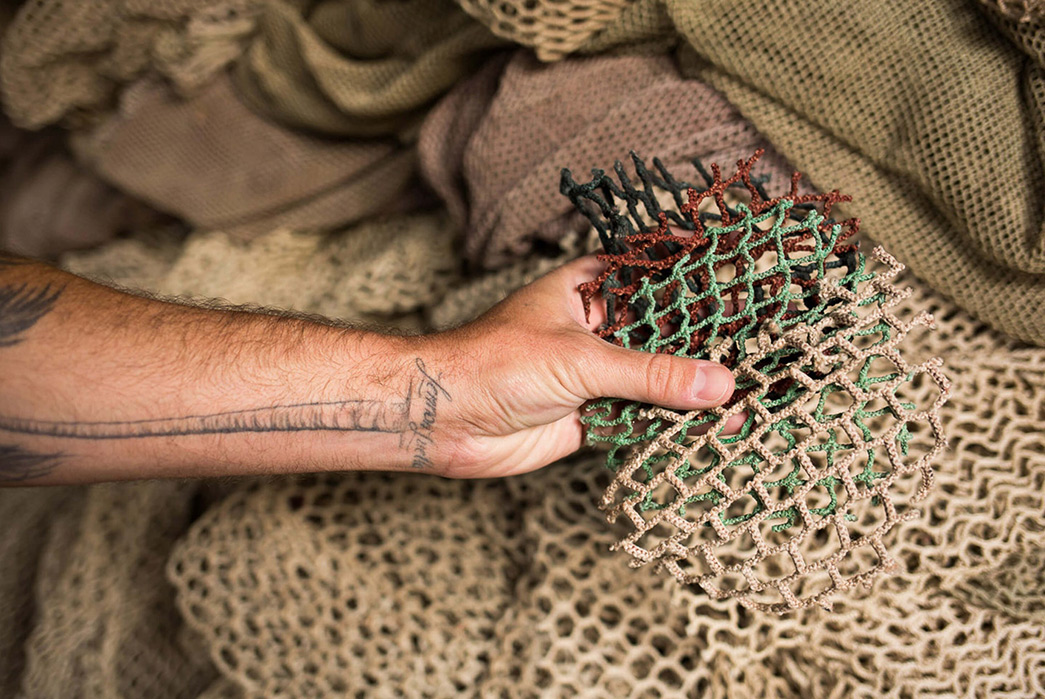
Fishing nets to be utilized in the production of Econyl fabric for Outerknown. Image via Outerknown
Helping to guide all of these new practices is the Cradle to Cradle Products Innovation Institute, which offers helpful resources for makers, and certifications for products that are assessed against the following categories: material health, material reutilization, renewable energy and carbon management, water stewardship, and social fairness.
The Ellen MacArthur Foundation, a pioneer in circular economy thinking, has initiated The Jeans Redesign project, which offers guidelines and requirements set by industry experts—the list includes restrictions on wastewater per yard of denim. For shoppers, there’s also Clevercare— a garment care-labeling system that encourages owners to rethink the way they wash, dry and iron clothes.
While all of the steps and ideas outlined here will be helpful in improving the clothing industry’s practices, it will only truly become circular when every principle is incorporated by every brand. That might seem a long way off, but the small signals of change that we’re seeing are certainly encouraging.

